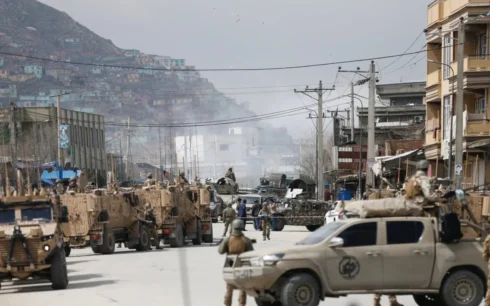Methamphetamine trafficking in and around Afghanistan has surged in recent years and the illegal manufacturing of the drug in the country is seen as a growing threat, a United Nations report said on Sunday.
“The surge in methamphetamine trafficking in Afghanistan and the region suggests a significant shift in the illicit drug market and demands our immediate attention,” said Ghada Waly, executive director of the UN Office of Drugs and Crime (UNODC).
According to the report, suspected Afghan-origin seizures of methamphetamine have been reported from places as far away as the European Union, the Near and Middle East, South-east Asia and Eastern Africa.
The drastic increase in methamphetamine seizures in Afghanistan and neighboring countries however, indicates that methamphetamine trafficking is expanding rapidly, changing illicit drug markets traditionally focused on the trafficking of opiates from Afghanistan.
This surge comes in the wake of the Taliban’s efforts to curb the cultivation of poppies, and the distribution and smuggling of heroin.
While heroin trafficking has slowed, the UNODC said that meth trafficking “has intensified since the ban”.
Meth seizures in and around Afghanistan jumped 12-fold in the five years through 2021. Between 2019 and 2022, nearby countries such as Iran and Pakistan also reported increased seizures. Countries as far away as France and Australia have reported seizing methamphetamine that likely originated in Afghanistan it said.
The UNODC said much of the meth from Afghanistan was made with pre-cursor ingredients such as those found in some cold and flu medication.
Afghanistan is home to the ephedra plant, which can be used to make methamphetamine, but the UNODC said the quantities needed to produce the drug and the risk of unreliable crops meant that Afghanistan’s production did not depend on the plant alone.
“Common cold medications and industrial-grade chemicals are more efficient and cost-effective for the manufacture of methamphetamine and thus pose a far bigger threat,” the UNODC said.
The UNODC also stated that seizures of methamphetamine have increased from some 2.5 tons in 2017 to 29.7 tons in 2021 in Afghanistan and neighboring countries, with an increasing share originating from Afghanistan.
According to the report, within Afghanistan, annual seizure totals rapidly rose from less than 100 kg in 2019 to nearly 2,700 kg in 2021, suggesting increased production.
The former republic government reported in early 2021 that methamphetamine was being produced in many provinces in the country, using chemical inputs from neighboring countries.
UNODC stated that to better respond to emerging threats and trends, it is critical to strengthen the understanding of the scope and use of different primary inputs for illegal manufacture of methamphetamine in Afghanistan through more regular mapping and chemical signature analysis of seizures and licit flows of cold medicines and ephedrines, as well as monitoring ephedra plant harvesting and trading.
The agency also said that regional policies and efforts targeting the diversion and smuggling of chemical precursors could help reduce the illegal supply of methamphetamine.





